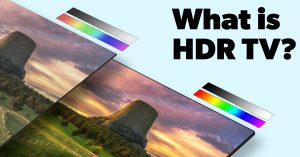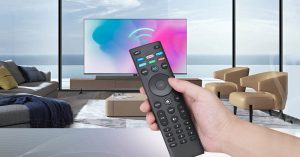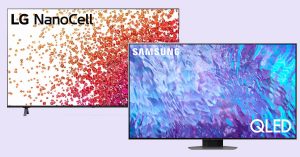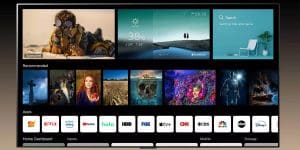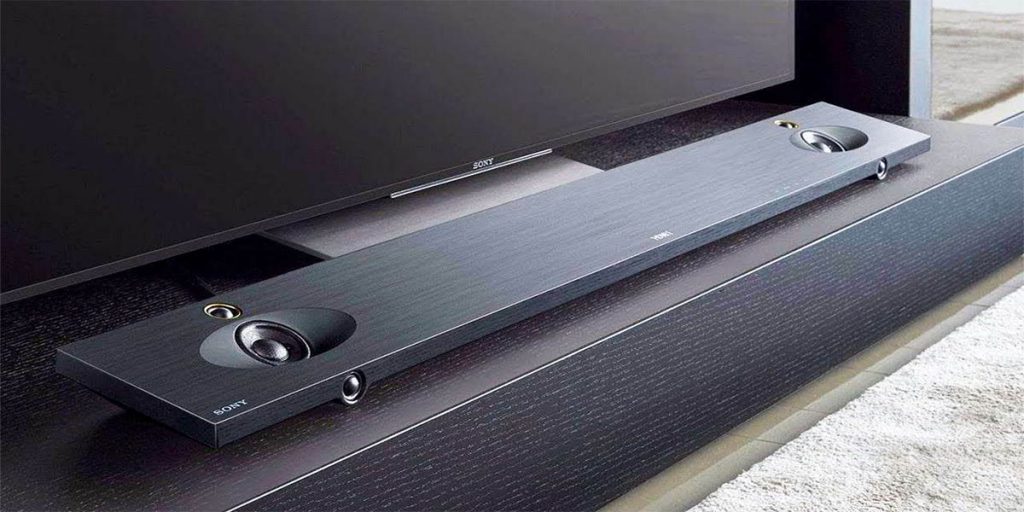Which is better for a TV, IPS vs VA
The main indicator of the quality of the TV is the quality of the image on the screen, and this largely depends on the technology used in the display. For LCD TVs, these technologies are VA or IPS, but which one is better for screen construction?
If you don’t want to bother with theory, you can answer right away:
VA is the best technology for building an LCD panel used in a TV.
This is the private opinion of many experts who professionally evaluate these technologies, with the help of stands and special devices.
Once again, this is a private opinion, you can not unequivocally prove which one is better — IPS or VA.
Table of Contents
ToggleInformation About TV Panels
The quality of the image on the TV screen is evaluated using several indicators:
- contrast,
- black level,
- brightness,
- color accuracy,
- color gamut.
Each of the technologies, VA and IPS, has an advantage somewhere and loses somewhere in these indicators. Therefore, there is no definite answer about which is better.
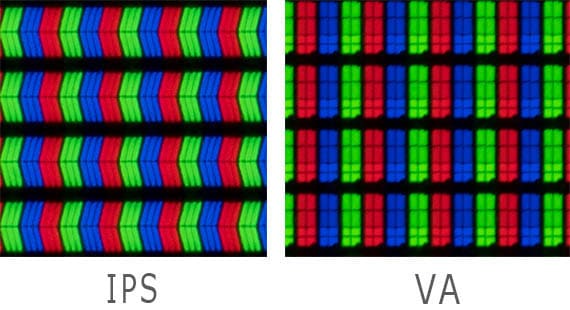
Liquid crystal displays (LCD) are predominant in TVs. These include conventional LCD TVs, Samsung’s QLED, and LG’s NanoCell. Their competitors — OLED screens — are built using a completely different technology without liquid crystals.
LCD screen consists of several layers, one of which is a layer of liquid crystals. The arrangement of the liquid crystals in space indicates whether the panel type used is VA or IPS.
VA technology (vertical alignment) — vertical alignment in a matrix. Liquid crystals in a VA matrix are perpendicularly aligned when voltage is switched off, i.e. they do not let light through. When voltage is applied, the crystals rotate 90° and a bright dot appears on the screen. Pixels do not allow light to pass through in the absence of voltage, so they are seen as black dots when they fail.
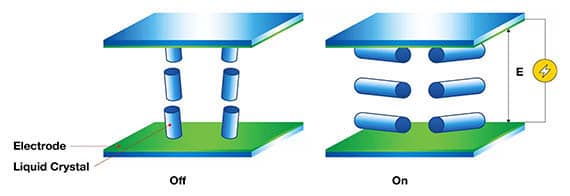
IPS (in-plane switching) technology is a technology for improving the viewing angles of an LCD in which the liquid crystal molecules in the matrix switch in the plane of the LCD screen layer, rather than perpendicular to it.
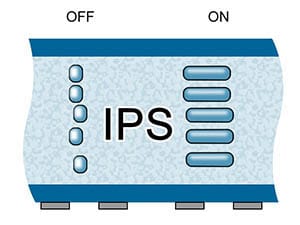
It is from the arrangement of the liquid crystals in the cells of the matrix that the main display characteristics arise.
For screen pixels to shine, you need a light source. The backlight is such a source, and the crystals in the cells allow this flow of light to pass through or block its path, depending on their position in space. The position of the crystals is regulated by the applied voltage from the TFT layer (thin film transistors).
So by regulating the voltage applied to the cells of the matrix from the TFT, we can regulate the glow of each sub-pixel. As you know, the picture on the screen is built from the pixels of the matrix, and each pixel is divided into three subpixels.
Some of the characteristics of the screen, like its color spectrum, depend on the backlighting of the matrix itself. These are color purity (naturalness and richness) and color gamut. White light-emitting diodes (LEDs) are used for backlighting. To improve color purity, they introduce different color filters, two-component LEDs, and a new layer of quantum dots.
Quantum dots are what gave rise to technologies like QLED and NanoCell. This is a layer of color filters through which the white backlight already becomes the desired color. If green grass is displayed, the backlight is greener, then the color spectrum is narrow and there is no harmful mixing from neighboring pixels. You get pure color without unnecessary halftones.
Color Accuracy VA or IPS
So color accuracy is affected not only by matrix technology but also by other technical factors, including the quality of backlighting and the quality of the processor. The processor, especially, is important for the video upscaling system. The processor may not have time to process the colors of each pixel. The more powerful the processor, the better.
Therefore, when evaluating the accuracy of color reproduction, you need to consider different characteristics.
By its structure, the IPS matrix gets more accurate color reproduction, all things being equal. But! This is where contrast interferes.
Contrast and Black Level
Here you need to consider the quality of the LED backlight. The backlight can be located on the sides of the screen (Edge LED), or evenly behind the matrix (Direct LED).
The backlight can realize local dimming. This is especially easy when the LEDs are located at the back of the matrix. If there are dark scenes in the image area, that is where the backlight reduces its glow and it is easier than creating black in the picture. This means that the backlighting is regulated by zones, and the more expensive the TV, the more such zones. There can be hundreds of such zones with local dimming, and with quantum dots, there are thousands.
Therefore, the contrast can be better for inexpensive TVs because they have better backlight regulation.
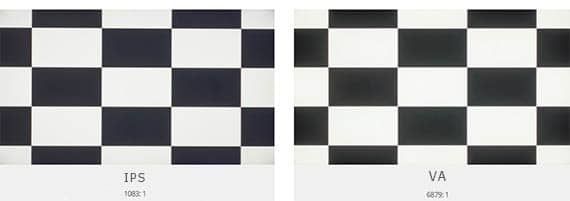
VA LCD panels offer the best contrast ratio and black levels, resulting in superior color reproduction.
It is recommended to choose a TV with a VA matrix for better picture quality.
Black Color Clarity IPS vs VA
The work of the backlight matrix has some disadvantages. One of them is the color clarity on the screen. If the black level is very important for VA and IPS technologies, then we will pay attention to the black purity.
Black uniformity tests determine how well a TV displays a dark scene with a bright image in the center. Ideally, you want the screen to be completely black and the center cross to be the only bright part, and this is important for people watching movies.


No light-emitting diode (LED) backlit TV has perfect uniformity, and unlike viewing angles and contrast, panel type does not completely determine black uniformity.
However, most tested VA panels have good black uniformity, while most IPS panels have black uniformity below par. This does not mean that every TV with a VA panel has good uniformity, as it can vary between devices, and you can also improve uniformity by using the local dimming feature.
As you can see in the images above, IPS has homogeneity issues with the shine and dimming of the backlight all over the screen. The entire screen also looks blue due to low contrast. The VA screen is much more uniform, and while you can see some backlight leakage around the edges, it disappears if you turn on local dimming, as shown in the photo.
Viewing Angles VA or IPS
A perennial problem with LCD screens is horizontal and vertical viewing angles. When you change the viewing angle and look at the TV from the side, both colors and contrast can change.
IPS matrices have better viewing angles. There they go as high as 178 degrees when the maximum is 180 degrees.
VA matrices have viewing angles greater than 160 degrees.
Vertical viewing angles rarely matter, its monitors can be above or below the eyes, and the TV is usually viewed in the center, as far as the vertical is concerned.
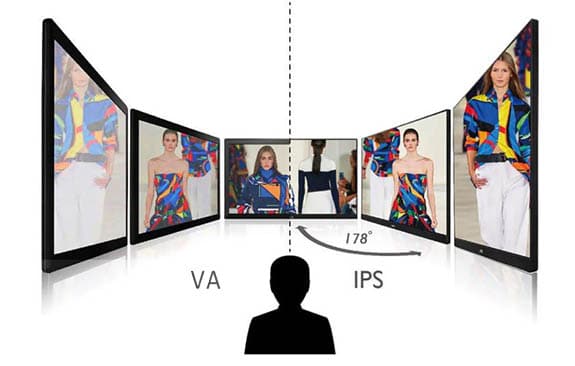
General
All these points should be taken with caution. Technology is far advanced and the difference in these points between VA and IPS is small.
Especially if you compare a cheap TV with a VA matrix and an expensive one with an IPS screen, or vice versa. So you can choose in favor of IPS. But if you compare the two technologies, taking into account the equality of other characteristics such as backlighting, response time, and processor performance, then you will make a more accurate choice. And it will most likely be in favor of the VA matrix, because of the contrast.
But LG uses the IPS matrix in its LCD models, and the owners of these TVs are satisfied. Samsung uses the VA matrix, and its customers are also happy. So do not conclude in advance. If this is an important question for you, then go to the store and compare.
VA or IPS Monitors are Better
There are slightly different criteria for choosing a monitor matrix.
Their video processing is done by the video card, and its performance is much better than that of the TV processors. The diagonal size of monitors is also smaller. The role of such parameters as “pixel response time” is increasing.
For example, many users only recommend IPS for graphics processing because of the accurate color rendering. While VA is recommended for general use, because of contrast. It’s a different story and a slightly different choice.
Author
-
Author of articles on tvrvi.com. I know all the TV industry news and spend a lot of time to research TV technology.

